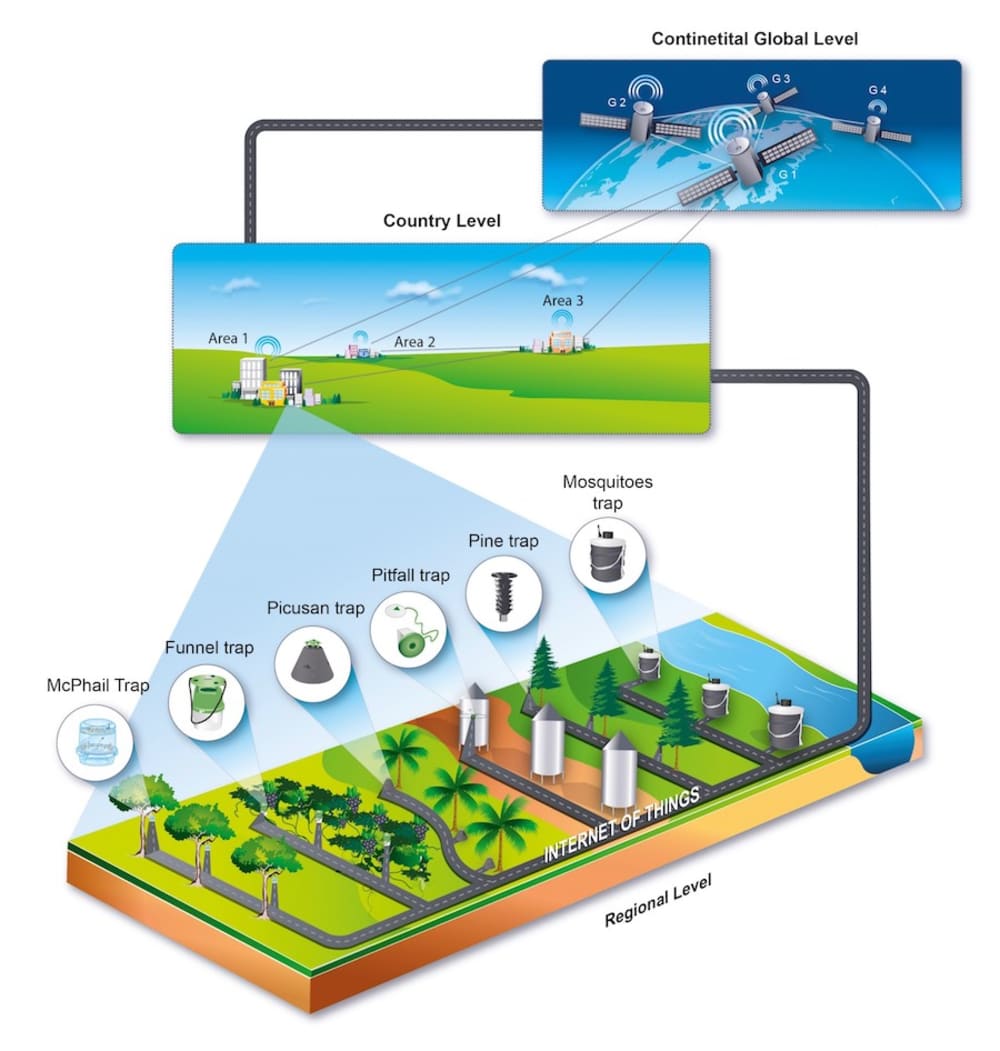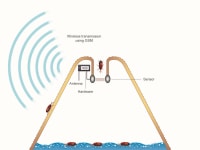We augment typical, low-cost plastic traps for many insect pests with the necessary optoelectronic sensors to sense the entrance of the trap to detect, time-stamp, GPS tag, and –in relevant cases- identify the species of the incoming insect from their wingbeat. For every important crop pest, there are monitoring protocols to be followed to decide when to initiate a treatment procedure before a serious infestation occurs. Monitoring protocols are mainly based on specifically designed insect traps. Traditional insect monitoring suffers in that the scope of such monitoring: is curtailed by its cost, requires intensive labour, is time consuming, an expert is often needed for sufficient accuracy and can sometimes raise safety issues for humans. These disadvantages reduce the extent to which manual insect monitoring is applied and therefore its accuracy, which finally results in significant crop loss due to damage caused by pests. With the term ‘surveillance’ we intend to push the monitoring idea to unprecedented levels of information extraction regarding the presence, time-stamping detection events, species identification and population density of targeted insect pests. Insect counts as well as environmental parameters that correlate with insect’s population development are wirelessly transmitted to the central monitoring agency in real time, are visualized and streamed to statistical methods to assist security control to insect pests.
We have identified the following ways to detect insects’ presence:
a) photo-interruption of either entering or falling insects in several types of traps (e.g. Red-palm weevil traps, pitfall traps, funnel traps, beehives). A low power emitter of infrared-light and a coupled photodiode form a sheet of light covering the entrance of the trap. The flow of light is interrupted from an entering insect and thus it is counted,
b) Analysis of the wingbeat of entering flying insects in traps (as in McPhail type and mosquito traps). The flow of light is modulated by the wingbeat of the insect flying-in. The wingbeat is recorded and constitutes a biometric signature of a specific species,
c) Picking up their vibrations due to locomotion and feeding (chewing) in grains (only for stored grain pests).
The traps can be self-organized in networks that collectively report data at local, regional, country, continental, and global scales using the emerging technology of the Internet of Things (IoT).
We have embedded our electronics in traps monitoring population of insect pests of olive, cotton, grapes, fruit trees, stored cereals and pulses, pine trees and palm plantations. Mosquitoes and beehives are a category of their own that have also been integrated with our framework.
We envision that e-traps can summon and, guide spraying and evidence gathering drones (Unmanned Air-Vehicles) and, therefore, automatize the circle of assessment and treatment of pests at large spatial scales.
We argue that smart traps communicating through IoT to report in real-time the level of the pest population from the field straight to a human controlled agency can, in the very near future, have a profound impact on the decision-making process in crop protection and will be disruptive of existing manual practices.
Like this entry?
-
About the Entrant
- Name:Ilyas Potamitis
- Type of entry:individual
- Patent status:none








